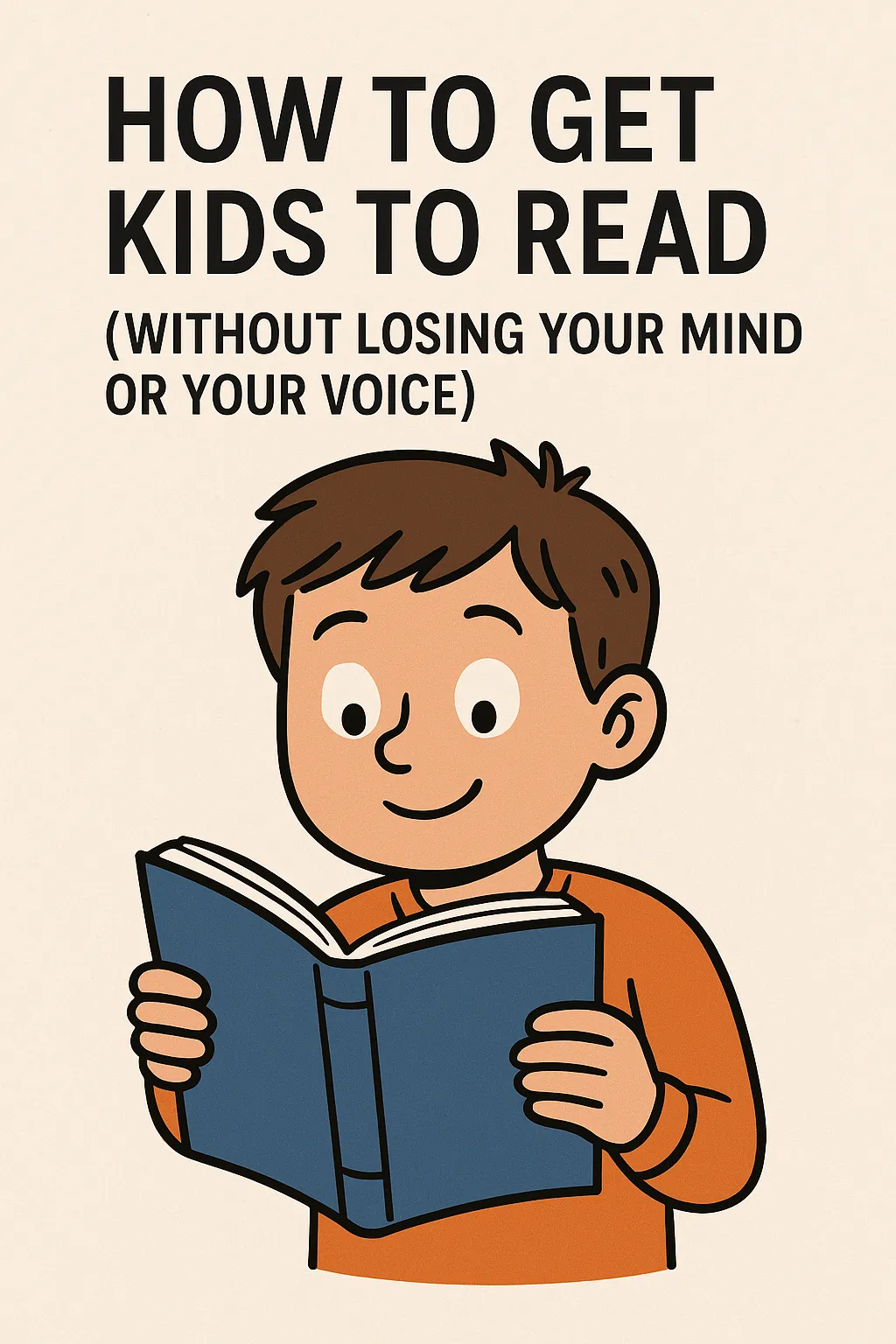
How to Get Kids to Read (Without Losing Your Mind or Your Voice) By Someone Who’s Bribed Their Fair Share of Bookworms-in-Training
How to Get Kids to Read (Without Losing Your Mind or Your Voice)
By Someone Who’s Bribed Their Fair Share of Bookworms-in-Training
Let’s be honest—getting some kids to read can feel like convincing a cat to take a bubble bath. Sure, it might happen, but there’s going to be resistance, drama, and probably some scratching. As teachers and parents, we know reading is vital. But getting kids to fall in love with books—without turning it into a chore—can be one of our biggest challenges.
So how do we go from “Do I have to read?” to “Can I read one more chapter?” Let’s explore some low-stress, high-reward ways to encourage reading—and maybe even enjoy the ride along the way.
1. Ditch the Pressure, Keep the Pleasure
Kids can sniff out stress faster than you can say “reading log.” If reading becomes a battlefield, nobody wins. The first step? Take the pressure off.
Let kids choose what they read—even if it’s a LEGO catalog, a Minecraft guide, or a joke book with more puns than plot. Reading is reading. When we shift the goal from “reading the right thing” to “enjoying the act of reading,” we make space for authentic interest.
Remember: the path to Charlotte’s Web might start with Captain Underpants. And that’s okay.
2. Use Humor as Your Secret Weapon
Funny books are the gateway snack of the reading world. They’re irresistible.
Books like Dog Man, The Day My Butt Went Psycho, or The Book with No Pictures can break down resistance faster than a sugar rush at recess. Don’t underestimate the power of a well-placed poop joke to spark a lifelong love of literacy.
Even older readers love a laugh. Try series like Diary of a Wimpy Kid, Big Nate, or Wayside School stories to sneak in some solid reading under the guise of giggles.
3. Create a Reading Ritual (Not a Reading Bootcamp)
Let reading be cozy, not compulsory. Create a nightly routine: dim the lights, grab a blanket, and make it feel special. Popcorn doesn’t hurt either.
Even 10 minutes a day can add up fast—and if you’re reading together, you’re building connection and comprehension.
Bonus tip: Let them read to you—even if they’re just starting. You’ll get a front-row seat to their progress, and they’ll feel like reading matters.
4. Audiobooks Count—Really!
If a child prefers listening to stories, go for it. Audiobooks are amazing for building vocabulary, fluency, and imagination. Plus, they let you fold laundry while Harry Potter works his magic in the background.
Some kids need to hear the rhythm of storytelling before they feel confident reading on their own. That’s not cheating—it’s scaffolding.
Pair audiobooks with the physical book for a double whammy of comprehension and engagement. (Also: it keeps their hands busy and eyes off screens for a while. You’re welcome.)
5. Let Books Be Social
Reading doesn't have to be a solo mission. Try:
Reading challenges (with fun rewards, like “Choose what’s for dinner!” or “Extra screen time!”)
Buddy reads with siblings, classmates, or even pets—yes, pets. They’re nonjudgmental listeners.
Book clubs for kids—even if it’s just you, your child, and a bowl of goldfish crackers.
When books become part of play and social life, they feel less like homework and more like fun.
6. Celebrate Progress—Not Perfection
Finally, remember this: not every kid becomes a bookworm overnight. Some take detours through comic books, graphic novels, and “how-to-draw-an-anime-eye” manuals before landing in chapter book territory.
Cheer every step. Reading one page? That’s one more than yesterday. Laughing at a joke in a book? That’s comprehension. Picking up a book without being asked? Cue the confetti.
Final Thought: Keep It Light, Keep It Joyful
At the end of the day, we want kids to associate reading with joy, curiosity, and comfort—not stress, pressure, or nagging. So whether you're a teacher juggling 25 readers or a parent reading the same board book 47 times, know this: you're planting the seeds.
It might look messy. It might involve bribery (no judgment). But when it clicks—when they lose themselves in a story—it’s pure magic. And you helped make it happen.
